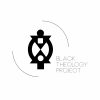By Heber Brown, III,
I recently read an article published by the Black Youth Project entitled, “The Black church can engage more Black millennials by bringing politics back into the pulpit” by Maya King, a journalism student at Howard University. After outlining some generational differences, suggesting that social media posts are more powerful than Black church pulpits, and decrying the fact that “not all Black religious institutions are willing to make themselves available on the frontline of social reform,” King concludes by arguing that the first step in restoring the Black Church is acknowledging that it’s “effectively dead.”
There is nothing new about this death sentence being pronounced over the Black Church. In fact, King’s article seems to follow the template established by Dr. Eddie Glaude of Princeton’s Department of Religion who articulated this same claim in a provocative op-ed in 2010. His piece started a firestorm of debate and a snowball effect of hundreds of other articles that seemed to take their cues from Glaude declaring as well that the Black Church is dead. Just like Glaude’s piece from 2010, King’s Black Youth Project article cites Pew Research about Black religious life, described the relationship between Black communities and Black Churches as “complicated” and proclaimed that it’s time to “breath new life” into the dead Black Church. It’s a refrain echoed so often that it can make one wonder if it’s being orchestrated or cleverly programmed in our minds in some kind of way. Can it really be just simple coincidence that out of all of the Faith institutions in the country, the message about the Black Church being dead and irrelevant gets amplified with the most passion, ink and air time? It’s almost on the path to becoming a genre of its own with some even going so far as to say “we need to stop building churches and start building institutions.”
“The most important institutional characteristic, however, is that the Black Church enjoys the greatest degree of autonomy from White Control. ”
The greatest institutional threat to the system of White Supremacy is the Black Church. Since the late 1700’s, Black Churches have been the most consistent place to inspire, resource, and nurture strivings for Black Liberation. As carefully chronicled in works such as Gayraud Wilmore’s Black Religion and Black Radicalism to Jessica Gordon Nembhard’s Collective Courage: A History of African American Cooperative Economic Thought and Practice, the bosom of the Black Church has birthed and nursed many organizations and campaigns for justice from the Abolitionist Movement to the Women’s Suffrage Movement to the Civil Rights Movement to Black Power and beyond! Today, many Black Churches remain working in the trenches of these same social justice traditions. Moreover, Black Churches have many if not all of the basic ingredients for building material Black Power in Black communities: organized people, deep wells of culture and spiritual tradition, a firm economic foundation, physical infrastructure, and thousands of acres of land. You can’t build a community or advance a movement without these ingredients! The most important institutional characteristic, however, is that the Black Church enjoys the greatest degree of autonomy from White Control. Perhaps this is why Dr. Amos Wilson, in his seminal work, Blueprint for Black Power: A Moral, Political and Economic Imperative for the Twenty-First Century, writes an entire chapter about the Black Church calling it “the largest socioeconomic institution in the Black Community by far.” Rev. Albert Cleage, Jr., founder of the Shrine of the Black Madonna echoed similar sentiments in 1972 in his book, Black Christian Nationalism: New Directions For The Black Church. He writes, “We are trying to build Black institutions and our only possible point of beginning is the Black Church…We have billions of dollars tied up in church buildings. If we are seriously interested in Black liberation we cannot realistically afford to just turn and walk away and leave this huge capital investment in the hands of the enemy.” In light of this, you would have to be at best ignorant or at worst politically naive to call for the death of the Black Church.White terrorists have long known what Wilmore, Nemhbard, Wilson, Cleage and countless others have demonstrated and spelled out regarding the significance of this vaunted Black-led institution. Though its history is filled with foibles, fumbles, and sometimes outright failures, its been the repeated target of social, political, and economic attack by White Supremacy because among Black institutions it is the most sustainable base of power for Black people with the most assets and longest track record.
I understand and am clear that racists and White Supremacy want the Black Church dead. It’s just baffling that some Black people have joined that crowd and are itching for an opportunity to help close the coffin.



Facebook Comments